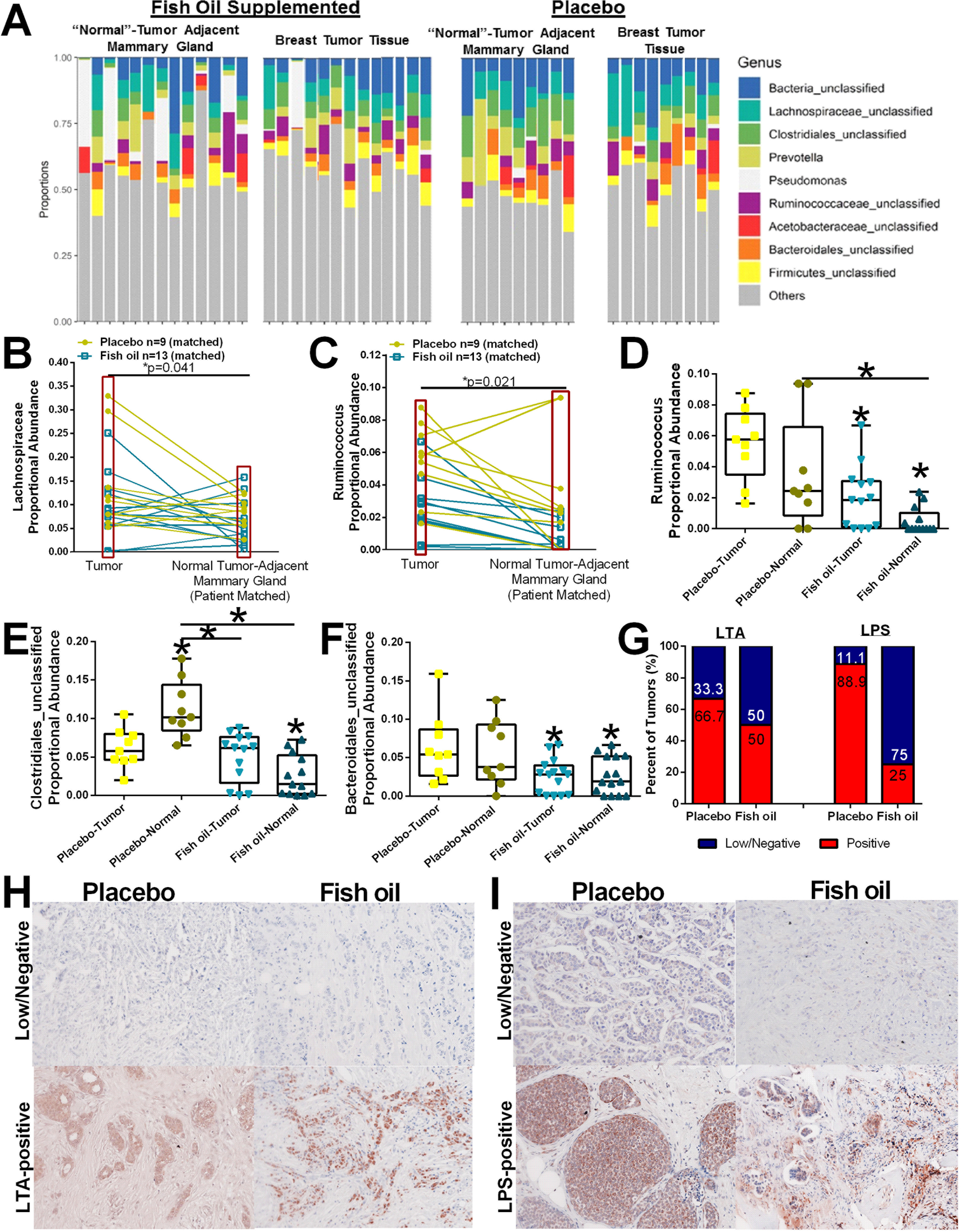Figure 7.

Oral administration of fish oil supplements shifts breast tumor and tumor-adjacent mammary gland tissue microbiota abundance. A. Relative abundance of bacterial genera in different breast tumor and tumor-adjacent mammary gland tissue samples obtained from breast cancer patients taking a placebo or fish oil is visualized by bar plots. Each bar represents a subject and each colored box a bacterial taxon. The height of a color box represents the relative abundance of that organism within the sample. “Other” represents lower abundance taxa. B. Proportional abundance of Lachnospiraceae (family) indicating breast tumors display elevated Lachnospiraceae compared with normal tumor-adjacent mammary tissue regardless of intervention. n=22;*p=0.04. C. Proportional abundance of Ruminococcus (genus) indicating breast tumors display elevated Ruminococcus compared with normal tumor-adjacent mammary tissue regardless of intervention. n=22;*p=0.02. D. Proportional abundance of Ruminococcus (genus) by tissue type and intervention. placebo-treated n=9; fish oil treated n=13; *p<0.05. Proportional abundance of Clostridiales_unclassified (E) and Bacteroidales_unclassified (F) by tissue type and intervention. placebo-treated n=9; fish oil treated n=13; *p<0.05. G. Percent of breast tumors that displayed high positivity (IHC score of 2 or 3) or low/negative (IHC score of 0 or 1) immune-reactivity against LTA or LPS. H. Representative IHC images of breast tumor sections stained against LTA to identify gram-positive bacteria content from placebo or fish oil supplemented women. I. Representative IHC images of breast tumor sections stained against LPS to identify gram-negative bacteria content from placebo or fish oil supplemented women.
